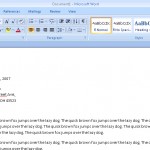Responding to Case Study #2 Outlines

I read and responded to Amy’s ENGL894 Locklear Case Study 2 Outline and to Jenny’s Exploring the Flow of Information in LLL via Rhetorical Situation and Genre Theory. Each took a different approach to the application of theories to object of study from each other and from the one I took in my outline, and…
Read more









